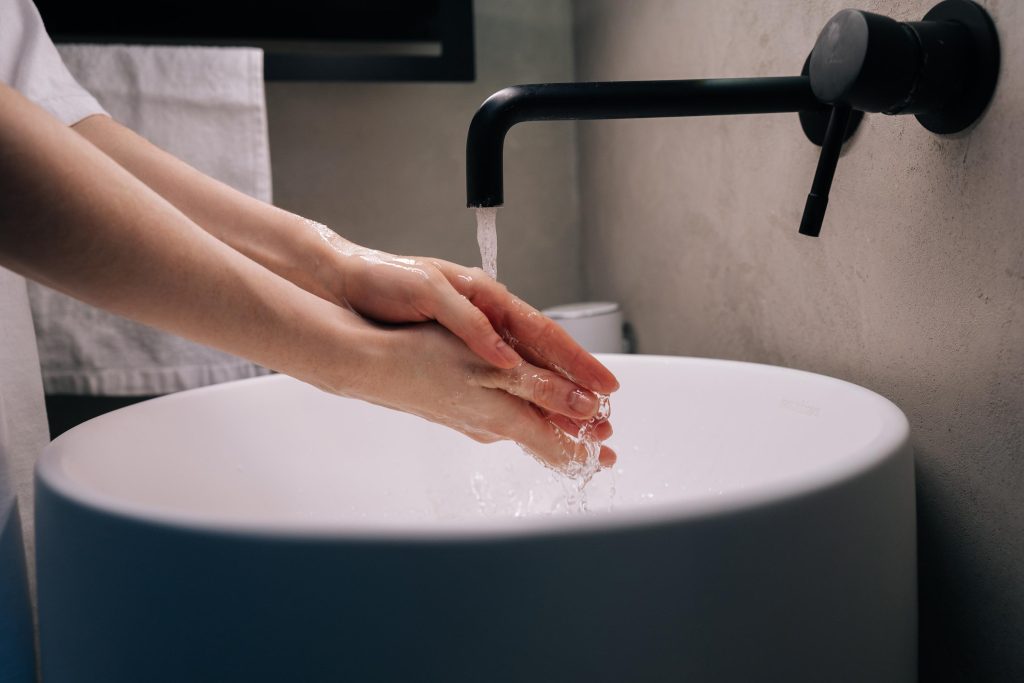Understanding Bathroom Vanity Water Damage: Prevention and Repair Tips

Bathroom vanity water damage is a common issue that negatively affects the look and functionality of your bathroom. If left unchecked, water damage can cause stains, warping, and even mould growth—leading to costly repairs. To keep your bathroom vanity safe from water damage, it’s essential to understand the causes of water damage and how to prevent it. Let’s explore how water damage happens, ways to protect your vanity, and repair tips for when things go wrong.

What causes bathroom vanity water damage?
Bathrooms are naturally high-moisture environments, which makes bathroom vanities vulnerable to water-related damage. Here are the main culprits:
1. Constant exposure to moisture
Steam from showers, splashes from sinks, and water from bathtubs all increase moisture levels in your bathroom. Over time, the wood or materials of your vanity absorb this moisture, causing it to swell, warp, or discolour.
2. Leaks and splashes
A leaky faucet or water splashes during daily use can damage your vanity if it is not properly sealed. Even small leaks accumulate over time, weakening the structure and leading to long-term damage.
3. Poor ventilation
Inadequate airflow in your bathroom traps humidity, which increases the risk of water damage. Moisture can settle on your vanity without proper ventilation, causing ongoing problems.
4. Cleaning habits
While regular cleaning is essential, using harsh chemicals or over-scrubbing can strip the protective layers from your vanity, leaving it vulnerable to water damage.
How to prevent bathroom vanity water damage
Prevention is always the best approach. Here are some steps you can take to protect your bathroom vanity:
1. Seal the wood
Sealing your vanity is crucial for preventing water damage, especially if your vanity is made from wood. Here’s how to do it:
- Choose the right sealant: Use a water-resistant finish like polyurethane or varnish. These finishes create a protective layer that keeps moisture out.
- Apply multiple coats: For maximum protection, apply two to three coats of sealant. Allow each coat to dry completely before applying the next.
- Touch up regularly: Over time, the sealant may wear off, so inspect your vanity and apply fresh coats when needed.
2. Choose the right wood for your vanity
When choosing materials for your bathroom vanity, selecting water-resistant wood is essential. Here are a few great options:
- Solid timber: Woods like oak, walnut, and teak are naturally durable and resistant to moisture, especially when treated with a sealant.
- Engineered wood: Materials like MDF or plywood with a moisture-resistant finish are affordable alternatives that offer better water resistance than untreated woods.
- Teak: Known for its natural water resistance, teak is an excellent choice for bathroom vanities.
At Jarrimber, we only use premium, sustainably sourced timber for our bathroom vanities, ensuring longevity and resilience. Plus, with our 10-year warranty, you can rest assured your investment will last.
For more detailed information, check out our blog on the best timber for bathroom vanities.
3. Install a splash guard or backsplash
Install a splash guard or backsplash behind your sink to prevent water splashes from damaging your vanity. This will protect the vanity from direct water contact and add a stylish touch to your bathroom.
4. Improve ventilation
Proper ventilation is key to reducing humidity and moisture buildup in your bathroom. Here’s how you can improve airflow:
- Exhaust fans: Install an exhaust fan to remove excess steam and humidity. Models with timers or humidity sensors are ideal for maintaining a dry environment.
- Windows: If your bathroom has windows, open them regularly to allow fresh air to circulate.
- Dehumidifiers: In very humid areas, using a dehumidifier can help control moisture levels and protect your vanity from water damage.
5. Wipe down surfaces regularly
A simple habit that goes a long way: regularly wipe down your vanity surfaces, especially around the sink, where water tends to pool. Even small puddles can cause damage over time if not cleaned up.
6. Use a water-resistant countertop finish
Your vanity countertop is just as susceptible to water damage as the base. Opt for materials like timber, granite, quartz, or marble, which are naturally resistant to moisture and be sure to apply a durable waterproof finish to your countertop.

How to repair bathroom vanity water damage
Even with the best precautions, accidents happen and water damage can still occur. The good news is that many forms of damage can be repaired with the right tools. Here’s how to fix common water-related issues:
1. Fixing warped or swollen wood
If your vanity’s wood has warped or swollen due to water exposure, follow these steps:
- Remove excess moisture: Dry the affected area with a cloth or hairdryer, but avoid applying direct heat, as this could cause further damage.
- Sand the surface: Once the wood is dry, gently sand the affected area to smooth out any rough spots caused by swelling.
- Reapply sealant: After sanding, apply a fresh coat of water-resistant finish to protect the wood and prevent future damage.
2. Repairing stains or discolouration
Water stains or discolouration can be unsightly, but they’re often fixable:
- Wood stain or touch-up kits: For minor discolouration, use a wood stain or touch-up kit to blend the affected area with the rest of the vanity.
- Reapply varnish or polyurethane: If the finish is worn down, applying a fresh layer of varnish or polyurethane can restore both appearance and protection.
3. Mould and mildew removal
Mould and mildew can develop in areas where moisture has been left standing for too long. To remove them:
- Clean with a mild detergent: Mix warm water and mild detergent, then use a soft cloth to clean the affected area.
- Use a mould remover: For stubborn mould, use a commercial mould and mildew remover and follow the manufacturer’s instructions carefully.
- Dry the area: After cleaning, make sure the area is thoroughly dry before applying any protective finishes.

Protecting your bathroom vanity from water damage
Bathroom vanity water damage is common, but preventable with the right care. Select the right materials, apply protective finishes, and maintain your vanity regularly to extend its life significantly. And if water damage does occur, knowing how to repair it can save you a lot of time and money.
If you’re considering a new bathroom vanity, choose one made from high-quality materials that can withstand the rigours of a bathroom environment. At Jarrimber, we use premium, sustainably sourced timber in all our bathroom vanities, ensuring that your vanity stands the test of time. Plus, with our 10-year warranty, you can have confidence that your vanity will remain as beautiful as the day it was installed. Ready to invest in a long-lasting bathroom vanity? Contact us today to explore our range of premium bathroom vanity units, designed to withstand the challenges of any bathroom environment.
Share This




